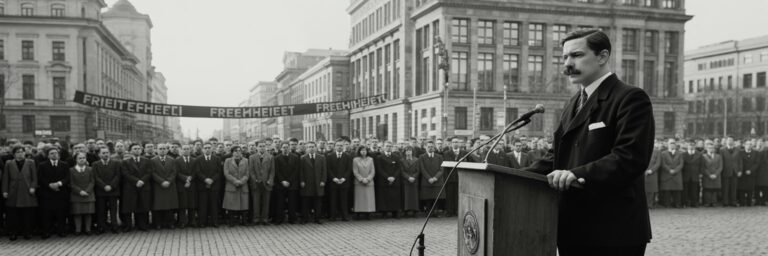INTRODUCTION
Our history is filled with tales of valor, betrayal, and astounding intrigue, but perhaps none as gripping as the events leading up to political assassinations. These political machinations that end in bloodshed often carry within them a myriad of cloaked secrets and guarded whispers, that take us down the rabbit hole of hidden motives, covert operations, and state-led agendas. Throughout this journey, we shall delve into the mysteries, controversies, symbolism, modern investigations, and enduring legacies that impact the political scenery even today. Buckle in as we uncover the secrets woven into the fabric of history-changing political assassinations.
HISTORICAL BACKGROUND
The proclivity humans have towards silencing their opponents reaches back as far as recorded history. One of the earliest instances illuminating this bitter fact was witnessed in 44 BC with the assassination of Julius Caesar. Caesar’s death was orchestrated by senators who perceived his unchecked power and prospective kingship as a threat to the Roman Republic. This political murder touted as ‘tyrannicide’ initiated a chain of events that culminated in the Roman Empire’s establishment.
Political assassinations permeate human history, from the execution of Thomas Becket in 1170 for defying King Henry II, the assassination of Jean-Paul Marat in 1793 during the French Revolution, to Leon Trotsky’s death in 1940, infiltrated by Stalin’s undercover agent. Of recent note, the assassination of JFK and Martin Luther King Jr. radically altered the course of American history. These assassinations house within them a whirlwind of covert operations, political conspiracy theories, and cultural significances that continue to influence modern narratives.
THEORIES AND INTERPRETATIONS
Demystifying the theories and interpretations behind political assassinations demands an intricate understanding of the socio-political fabric of the era. In Julius Caesar’s case, though the act was heralded as one of ‘liberty,’ several believe it was a practice of oligarchy, as Senators sought to retain power in their hands.
John F. Kennedy’s assassination is steeped in numerous speculative theories that continue to hold sway. Officially, the Warren Commission assigned guilt to Lee Harvey Oswald, but alternative theories posit involvement from the mafia, anti-Castro Cuban exiles, even rogue elements of the U.S. government. The Russian Foreign Intelligence Service’s covert operation assassinating dissident Alexander Litvinenko with radioactive polonium-210 in Britain reveals the vast arsenal at a state’s disposal to eliminate opposition.
MYSTERIES AND CONTROVERSIES
These assassinations are not without their share of mysteries and controversies. The JFK assassination, a watershed moment in American history, is filled with questions yet to be satisfactorily answered. Why were the Secret Service’s security protocols compromised? Was Oswald’s subsequent murder by Jack Ruby a mere coincidence, or an act to silence him?
The assassination of Swedish Prime Minister Olof Palme in 1986 or Pakistan’s former Prime Minister Benazir Bhutto in 2007 both remain wrapped in contested narratives, rumors, and unanswered questions, bred by incomplete investigations and political interference. These mysteries deepen intrigue, often giving rise to conspiracy theories that further muddy the waters of truth.
SYMBOLISM AND CULTURAL SIGNIFICANCE
Political assassinations carry significant symbolic undertones and cultural significance. The assassination of Archduke Franz Ferdinand in 1914 triggered World War I, symbolizing how a single event can disrupt international peace. Martin Luther King Jr.’s assassination signified an attempt to quell the civil rights movement, though it only ended up galvanizing it further.
In many ways, these assassinations serve as barometers of societal discontent, political tension, and moral outrage. They often encapsulate collective fears, standing as stark reminders of the extremes that power struggles can venture into.
MODERN INVESTIGATIONS
Unraveling the complexities of political assassinations has significantly evolved with technological advancements and refined investigation methods. Forensic science, digital surveillance, big data, and international cooperation have played crucial roles in unveiling hidden conspiracies and culprits. Modern investigations into the Litvinenko case through forensic radiation analysis, or JFK files released by CIA through recent declassification orders, provide fresh insights into shadowy occurrences of the past.
Nevertheless, despite advancements, determining comprehensive truths behind political assassinations, with their intense hallmarks of secrecy, remains particularly challenging, often leaving room for speculation and conjecture.
LEGACY AND CONCLUSION
The legacies of political assassinations range from expressions of profound socio-political discontent to ripples of instability and revolution. Often, they unintentionally canonize the victims while casting a harsh, illuminating light on the perpetrators. The death of Louis Mountbatten by the IRA or Egyptian President Anwar Sadat’s assassination forced nations to recalibrate their political stance and fight extremism actively.
In conclusion, political assassinations serve as a common thread seaming society’s history, filled with the drama of human ambitions and power. While each narrative is unique, at their core lies the perennial struggle for control, influence, and the desperate desire to mold history. They assert that the thirst for power can drive men to profoundly violent extremes, illuminating the darkest crevices of human nature.
What emerges is a tapestry of compelling narratives that not only shape, but often alter the course of history. The mysteries and secrets they harbor present challenges in terms of interpretation, thereby creating a fascinating, albeit morbid, roadmap of power dynamics and political upheavals that persistently mold our world.






